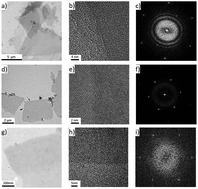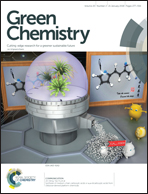Scalable synthesis of two-dimensional nano-sheet materials with chlorophyll extracts: enhancing the hydrogen evolution reaction†
Abstract
Developing strategies for preparing high-quality atomically thin two-dimensional (2D) nanomaterials is still an unaccomplished goal. Here we demonstrate that the major pigment used in natural photosynthesis, chlorophyll extracts, can effectively exfoliate bulk graphite, molybdenum dichalcogenides (MoS2) and boron nitride (h-BN) to form high quality thin sheets. The exfoliated MoS2 thin sheets were mixed with high-conducting single-walled carbon nanotubes (SWCNTs) and high surface/bulk ratio Pt nanoparticles (PtNPs) to form flexible MoS2/PtNPs/SWCNT papers for enhanced hydrogen evolution reaction (HER). Detailed electrochemical characterization shows that the flexible MoS2/PtNPs/SWCNT electrode (0.03 at% or 0.26 wt% Pt) exhibited excellent electrocatalytic activity toward the HER with an ultra-high exchange current density of 0.71 mA cm−2 which is identical to that of bulk platinum (Pt), “the gold standard” for hydrogen production, an ultra-low onset potential of −11 mV, a Tafel slope of 38 mV dec−1 and over 100 h of electrochemical durability.



 Please wait while we load your content...
Please wait while we load your content...